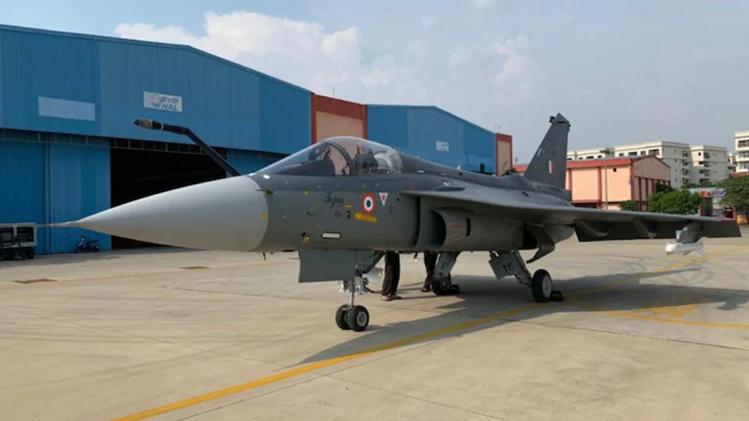Setting up an aircraft production line is different - very different - from setting up a Howitzer (Heavy Machinery), Submarine (Dry Dock/ Long term Project) or even for that case a truck plant. Given the fact that the Tejas uses a high percentage of composites (esp. in the skin and subframe) it is even more difficult. Cutting metal which is already made to a certain specification is not the same as making a composite part.
Other than that there are various other aspects that make it tough to set up an aircraft assembly line. The cost of setup is also extremely high (Capital expense) and in the volatile environment that we operate in (Today the GoI is supporting an Indian Aircraft - what if the orders don't materialize in the future?). The timeline to recover the investment is high as compared to the actual investment in this. Moreover, an aircraft factory can manufacture typically only that - aircraft. A dry dock can manufacture boats, ships, etc. A truck factory can easily make 'civilian' trucks, a tracked howitzer plant can make multiple heavy vehicles. etc.
Setting up a factory is tougher for the private sector - The government owns large swathes of land, which can be then easily moved (e.g. Military farms) to other government entities involved in nation building. Of course, we have to contend with 'activists' of all kinds - the private sector even more are hounded by these so called 'activists' - (Sterlite is just one example).
The challenge is with giving piecemeal orders (83 aircraft) which hampers long-term planning. Moreover, the Tejas wasn't exactly made for rapid production - that's why the many LSP's which helped to identify and plan the overall structure of manufacture (the old Tejas manufacturing line) which helped to make the new factory. There are many LRU's that have changed position for ease of manufacture and maintenance. The advantage is that once we have Mk2 - all the lessons learned from the Mk1 will help us test and build them quicker.
Also HAL with all its constraints has actually kept the IAF well supported. Many changes to small critical parts, which were denied to us or had embargos were made by reverse engineering/ alternative identification. Its not easy, considering that aircraft parts have to be tested extensively. A simple actuator is tested over one lakh cycles in various temperature and altitude settings before even being tested on an actual aircraft (one that has other actuators as fail safe). Do take the effort to read about how HAL made spares for aircraft when the manufacturer became defunct, how they redesigned some parts to make the aircraft safer etc.
Of Course a private player will be really great - but it will take investment on their part - we have some smaller setups (Tata, Mahindra, L&T, Godrej Aerospace) that can be leveraged to make parts (which they already are making) and then use them like a final assembly line.
Having said that, I envisage that Mk2, AMCA, TEDBF will all come within the projected timelines. The lessons learnt from the Tejas will drive the next generation faster - thats certain (esp. if the current government stays in power for a decade more).

